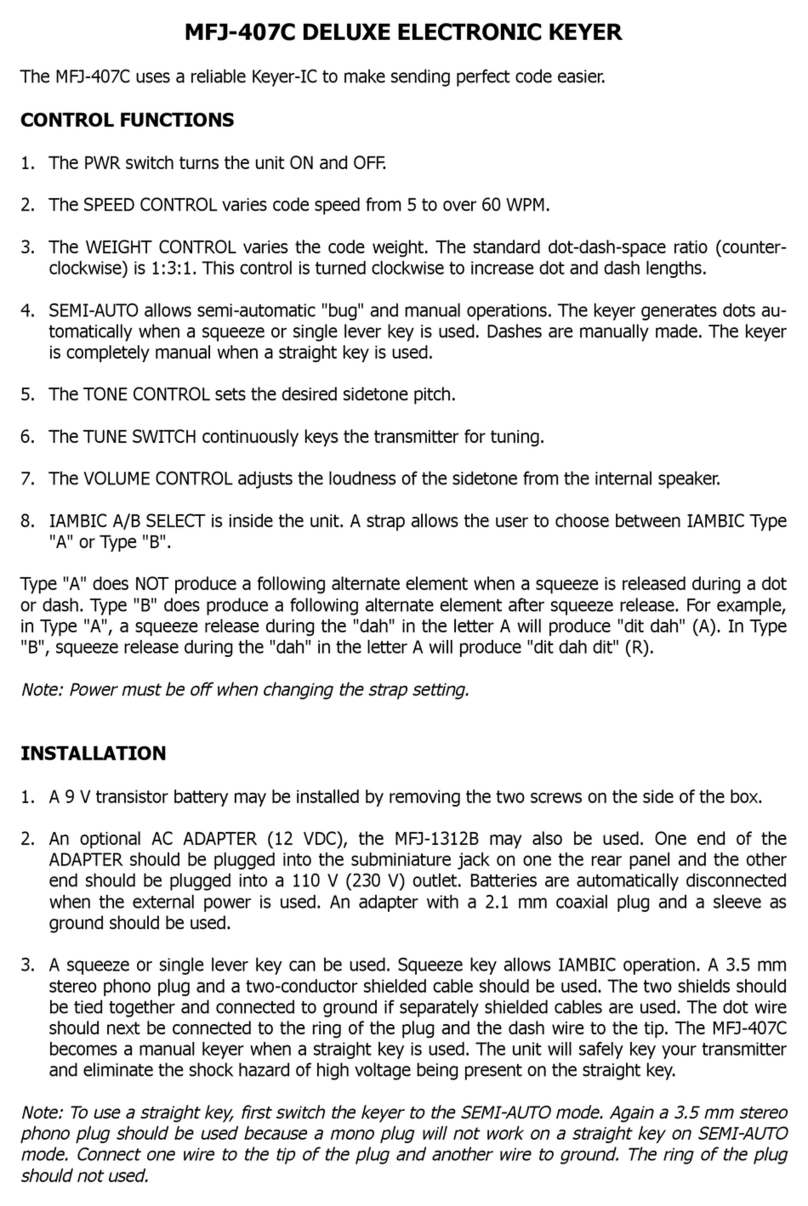
CMOS-4 Service Bulletin #3
Page 2
B) Cut the leads so they extend no less than 1/16" (2 mm), but no more than 1/8" (3
mm), past the bottom of the diode body.
C) Lightly tin each lead with solder.
D) Place one diode with its cathode
(banded) end on the solder pad for dot
and its anode (unbanded) end on the
ground solder pad for C6. See figure 2
at right. Hold the diode in position and
briefly touch the tip of your soldering
iron to the pad at C6, melting the solder
and securing one end of the diode at
that point.
E) In a similar manner, secure the other end of the diode to the dot solder pad.
Restrain the resistor that is in the dot pad while applying solder. Note that you may
have to add a small amount of solder to these joints in order to properly attach the
new diode.
F) In a similar manner, install the second diode to the dash pad and the C5 ground
pad.
G) After both ends of the new diodes are soldered into place, it is a good idea to go
back quickly and reheat both joints, one at a time, to ensure a good connection.
15) Install an SA22A diode as follows:
A) Bend the diode leads straight down, right at the body of the diode.
B) Cut the leads so they extend about 3/16" (5 mm), past the bottom of the diode
body.
C) Lightly tin each lead with solder.
D) Place the diode with its cathode (banded) end
on the solder pad for the anode end of D2 and
its anode (unbanded) end on the ground solder
pad between the + and SPKR pads. See
figure 3 at right. Hold the diode in position and
briefly touch the tip of your soldering iron to the
ground pad, melting the solder and securing
one end of the diode at that point.
E) In a similar manner, secure the other end of the diode to the D2 solder pad. Note
that you may have to add a small amount of solder to these joints in order to
properly attach the new diode.
16) Install the 10 uF and 0.1 uF capacitors as follows:
A) Trim the leads on both capacitors to 1/4" (6 mm).
B) Bend the last 1/8” (3 mm) out at right angles.





















